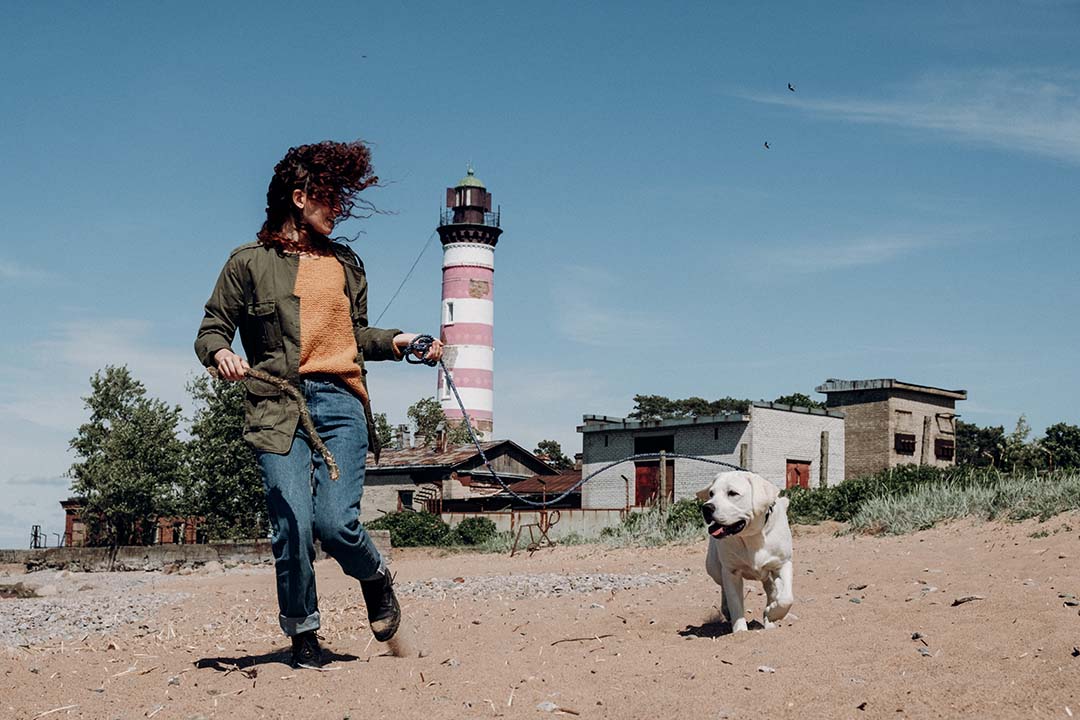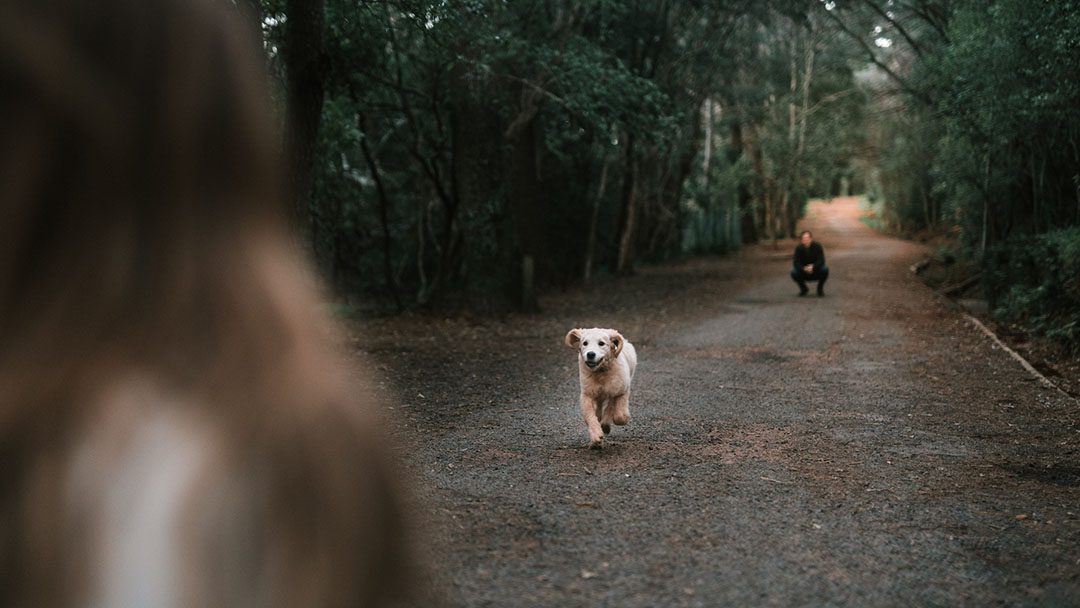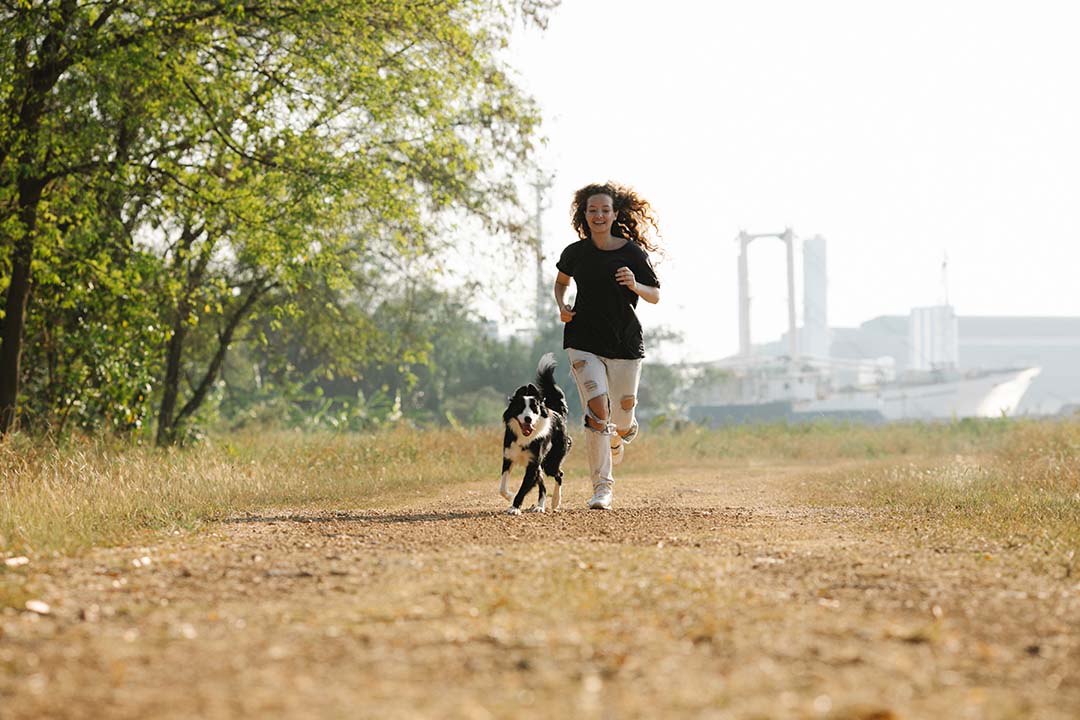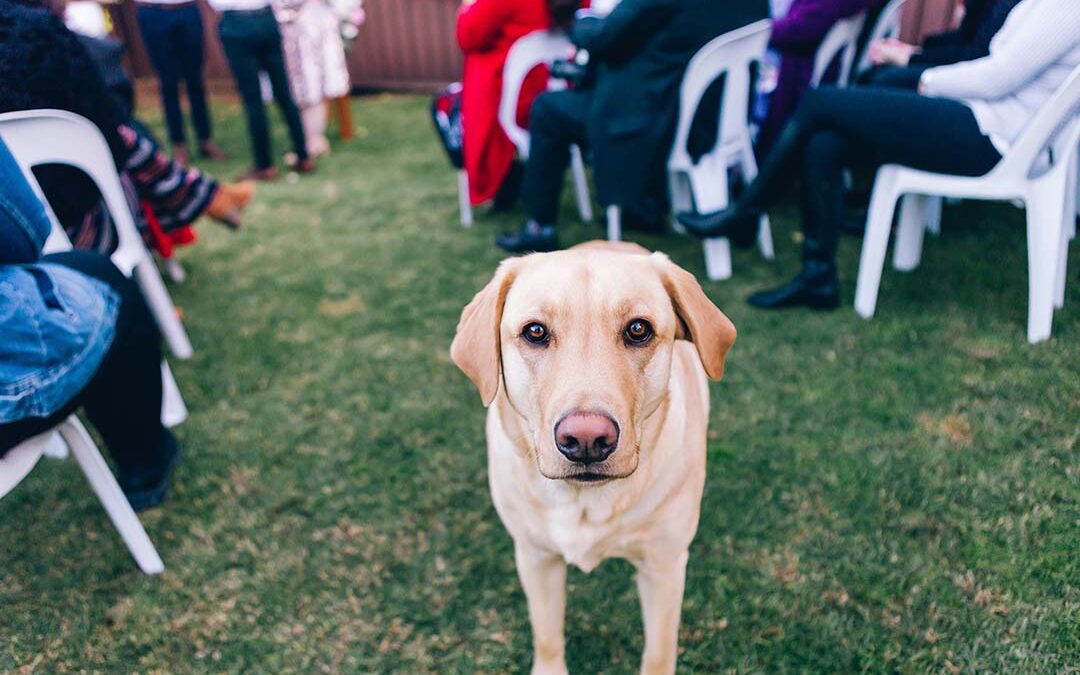How To Train My Dog To Ignore Strangers, is a thought that many dog owner’s have had once they realize their dog is easily excitable in public and social situations.
Training your dog to ignore strangers is not only crucial for your peace of mind. But also essential for your furry friend’s safety.
Dogs being overly friendly or aggressive towards unfamiliar people could lead to stressful or dangerous situations.
Training your dog to ignore strangers offers a balanced solution, allowing your pet to feel secure and behave calmly in various environments.
The best way to train your dog to ignore strangers is by instilling solid basic commands, socializing them carefully, employing positive reinforcement techniques, and practicing desensitization training, which we’ll discuss in detail in this guide.
These strategies help create a foundation for your dog’s behavior, ensuring they respond to your cues even when faced with distractions like unknown people.
In this post, we’ll walk through practical and effective steps to teach your dog to dismiss passersby gracefully, focusing instead on you, their trusted owner.
These skills are invaluable, whether strolling through a busy park or having guests over.
So, let’s dive into the strategies that make this training seamless and enjoyable for you and your pet, ensuring a safer and happier coexistence!
Understanding Your Dog’s Behavior
Recognizing your dog’s behavior around strangers is fundamental to effective training. Typically, dogs may react to unfamiliar people due to anxiety, fear, or territorial instincts.
They could also be seeking attention or are naturally over-excitable. Understanding these behavioral cues is the cornerstone to effectively guide your dog to ignore strangers.
Socialization and training play pivotal roles in molding your dog’s behavior.
Socialization introduces dogs to various environments, situations, and people, helping them become more adaptable and less fearful of the unknown.
Early socialization can significantly reduce anxiety and aggression in dogs, making them more comfortable and composed around strangers without feeling the need to interact.
On the other hand, training provides dogs with a set structure, rules, and boundaries. Through consistent and patient training, dogs learn to understand and follow commands, which is crucial when instructing them to ignore or avoid strangers.
Training serves not only to control your dog’s reactions but also to enhance the bond and understanding between you and your furry friend, creating a sense of security and trust.
These elements work hand in hand to cultivate a calm and disciplined demeanor in your pet, allowing for pleasant walks and gatherings without the stress of unpredictable reactions to unfamiliar faces.

Basic Commands Mastery
Before moving into specific strategies for training your dog to ignore strangers, ensuring they have mastered the basic commands is crucial.
These commands form the foundation for all subsequent training, giving you control and your dog a sense of structure. Commands like ‘sit,’ ‘stay,’ and ‘leave it’ are particularly important in this context.
If your dog responds reliably to ‘sit’ and ‘stay,’ you already have the essential tools to manage their behavior around strangers. With your dog seated and staying, they are less likely to approach people without your permission.
The ‘leave it’ command is invaluable for teaching your dog to ignore strangers. When a stranger approaches, a well-timed ‘leave it’ tells your dog to immediately stop what they’re doing and pay attention to you instead. This command effectively prevents unwanted interactions and keeps your pet focused on you amidst distractions.
For instance, when walking and seeing a stranger approaching, you can instruct your dog to ‘sit’ and ‘stay.’ Use the’ leave it’ command if the stranger tries to engage with your dog.
With consistent practice, your dog will learn to ignore the stranger and wait for your next command, maintaining a calm and obedient demeanor during the encounter.
Training your dog to respond to these commands reliably takes time, patience, and consistency. Use treats, praises, or their favorite toys as rewards when they follow your order correctly.
Remember to practice these commands in various settings, so your dog learns to respond in different environments and situations.
When you train your dog to ignore strangers using these commands, you create a secure and respectful environment for your pet and the people around you, paving the way for more advanced training techniques outlined in the following sections.
Socialization Training
Socialization training is fundamental in teaching your dog how to appropriately behave around strangers. This process involves exposing your dog to various environments and people in a controlled and gradual manner, helping them become accustomed to new faces without feeling overwhelmed or anxious.
Introducing your dog to different settings and individuals helps reduce fear and uncertainty, fostering confidence. A confident dog is less likely to act out or become overly excited when encountering strangers.
Remember, the objective isn’t to make your dog indifferent to you but to help them understand that strangers don’t always warrant a reaction.
Begin socialization training in a calm environment where your dog can observe strangers from a distance.
Parks or outdoor cafes can be ideal starting points. Keep your dog on a leash and let them watch people pass by. Reward your pet for calm behavior, reinforcing the idea that being relaxed around strangers is positive.
Gradual introduction is crucial. Don’t rush the process. Allow your dog to observe strangers without directly interacting with them initially. As they show signs of comfort and non-reactivity, you can gradually decrease the distance between your dog and unfamiliar people.
Consistency in this practice helps reinforce learned behavior, easing your pet into this new experience.
Through careful and progressive socialization training, you are teaching your dog to ignore strangers and helping them navigate various social scenarios with ease and confidence.
With a well-socialized dog, every walk or gathering becomes a more enjoyable and stress-free experience for both of you.

Positive Reinforcement Techniques
Positive reinforcement is a powerful and effective training strategy that reinforces good behavior, making the learning process enjoyable for your dog.
This approach involves rewarding your pet for displaying the desired behavior. This encourages your pet to repeat it in the future.
Rewards and praise are central to positive reinforcement. When your dog acts appropriately around strangers — for instance, by staying calm and not seeking attention — promptly reward them with a treat, verbal praise, or a favorite toy.
These rewards signal your dog that their behavior is correct and appreciated, fostering a positive association with acting calmly around unfamiliar people.
Here’s a practical example: If your dog sits quietly while a stranger passes by during a walk, immediately offer a treat or a verbal affirmation like “Good job!”
Consistency is key, so reward your dog each time they display the desired behavior. Over time, your pet will understand that ignoring strangers leads to positive outcomes, further ingraining this behavior.
It’s important to use rewards that your dog values. Not all dogs are motivated by the same incentives, so it might take some experimentation to determine whether your pet prefers treats, praises, or toys.
Once you identify what motivates your dog, use it consistently to encourage and reinforce their training.
By incorporating positive reinforcement techniques, you not only foster training your dog to ignore strangers but also promote a trusting and positive relationship with your pet.
This approach makes training sessions enjoyable and productive, leading to a well-behaved and happy dog that easily navigates social situations.

Desensitization Training
Desensitization training is invaluable for helping your dog become more comfortable and non-reactive around strangers.
This approach gradually exposes your dog to the stimuli that cause them stress or excitement in a controlled and safe manner, reducing their sensitivity over time.
Desensitization works by presenting the triggering stimuli — in this case, strangers — at a low intensity so your dog barely reacts. You’ll want to start at a distance where your dog notices strangers but does not exhibit stress or overexcitement.
The objective during these initial stages is to have your dog experience the presence of strangers without adverse reactions.
Here’s a step-by-step guide to streamline the desensitization process:
- Identify the Trigger: Understand at what distance or under which circumstances strangers trigger your dog’s reaction.
- Controlled Exposure: Place your dog in a situation where they can observe strangers without feeling threatened. This could be sitting by a window looking out the street or in a parked car while people pass by.
- Reward Calm Behavior: When your dog sees a stranger and remains calm, promptly reward them. This can be with a treat, praise, or petting, depending on your dog’s response.
- Gradually Decrease Distance: Over time, and as your dog becomes more comfortable, reduce the distance between your dog and strangers, always rewarding calm behavior.
- Monitor Progress: Pay attention to your dog’s comfort levels and adjust the distance accordingly, not rushing the process.
- Practice Regularly: Consistency is crucial. Engage in desensitization exercises regularly until your dog exhibits consistent, calm behavior around strangers.
Through careful and consistent desensitization training, your dog will learn to associate the presence of strangers with positive experiences, eventually ignoring them without fear or aggression.
This technique, combined with the others outlined earlier, creates a comprehensive approach to training that fosters a calm and well-behaved dog, ready to navigate various social scenarios confidently and peacefully.

Consistency and Patience
Consistency and patience are significant factors in training your dog to ignore strangers. Like learning any new skill, dogs need time and repetition to understand and internalize the behaviors you’re trying to instill.
Consistency in training is paramount. Dogs thrive on routine and predictability. When training sessions occur regularly and commands are given consistently, your dog will quickly grasp what’s expected of them.
For example, suppose you’re working on desensitization training. In that case, it’s crucial to practice it routinely, allowing your dog to steadily become accustomed to being around strangers without reacting.
But while being consistent, it’s equally vital to arm yourself with a healthy dose of patience.
Dogs, like humans, have good and bad days. There might be sessions where your dog is not as responsive, or it seems like they’ve forgotten their training altogether.
It’s essential during these times to remain calm and patient, understanding that learning is a process filled with ups and downs.
Patience tells your dog you’re a source of support and safety, not frustration or anger.
Remember, each dog is unique, with their own set of fears, triggers, and pace of learning. Celebrate the small wins, and be reassured if progress is slower than expected.
The key is to stay committed to the training plan, adjusting as necessary to meet your dog’s specific needs and learning pace.
Training your dog to ignore strangers takes time to happen. It’s a gradual process that requires a steady commitment to practicing and reinforcing behaviors consistently and patiently.
With time and perseverance, your furry friend will become more adept at navigating social situations calmly and confidently, making every outing enjoyable and stress-free for both of you.
Seeking Professional Help
While many dog owners successfully train their pets at home, there are situations where seeking professional help is beneficial and even necessary.
Professional dog trainers possess the experience and knowledge to address various behavioral issues, providing tailored strategies that align with your dog’s unique personality and needs.
Sometimes, despite your best efforts, your dog may struggle to ignore strangers. This might be due to deep-seated anxiety, fear, or aggression issues that require specialized intervention.
In such cases, a skilled trainer or behaviorist can offer invaluable insights and techniques to modify your pet’s behavior effectively.
Professional trainers also come in handy when you, as the pet owner, find it challenging to maintain consistency in training due to a lack of time or expertise.
Training your dog to ignore strangers requires a dedicated effort. If you cannot invest the necessary time, it’s wise to consider professional assistance.
They can help establish a training routine and provide support, ensuring the process is effective and stress-free for you and your dog.
Furthermore, immediate professional intervention is advised if your dog exhibits extreme anxiety or aggression towards strangers.
Such behaviors could escalate if not addressed promptly and pose risks to your dog and the people around them.
Training your dog to ignore strangers may necessitate that extra layer of expert help to navigate challenges and setbacks effectively.
Engaging a professional does not signify failure but reflects a commitment to providing your furry friend the best care and training.
With expert guidance, you likely notice faster and more sustainable progress in your dog’s behavior, leading to a harmonious and joyful relationship between you two.

Final Thoughts
We’ve covered a lot of ground together in this guide. Hopefully we’ve answered your question “How To Train My Dog To Ignore Strangers?”
We highlighted various techniques and strategies crucial for successfully training your dog to ignore strangers.
From understanding your dog’s inherent behavior and mastering basic commands to implementing socialization, positive reinforcement, and desensitization training, each step plays a pivotal role in shaping your dog’s conduct around unfamiliar people.
It’s essential to approach this training with commitment and understanding. Dogs learn at different paces, and their progress hinges significantly on your consistency, patience, and the positive environment you create for them during each training session.
Training your dog to ignore strangers is about enhancing your walks and social gatherings and fostering a sense of security and well-being for your pet.
When your dog learns to stay calm and non-reactive in the presence of strangers, they are better equipped to navigate the world confidently and stress-free, making your life and theirs more enjoyable and harmonious.
Remember, while the tips and techniques discussed provide a roadmap, every dog is different, and you might need to tweak these strategies to align with your pet’s personality and specific needs.
And there’s no shame in seeking professional help if needed. Sometimes, an expert perspective can make a difference in addressing and overcoming training hurdles.
Success in training your dog to ignore strangers comes with time, practice, and a heap of love and understanding for your furry friend.
So, keep at it, celebrate the small victories, and know that with each training session, you’re working towards building a stronger, more trusting, and joyful relationship with your beloved pet.
We hope you found value in this guide! Consider reading our related articles below for more practical and easy-to-follow dog training tips. Each piece is designed to support you in fostering a happy and respectful relationship with your pet.
If you wish to receive regular updates and expert advice straight to your inbox, don’t hesitate to subscribe to our newsletter. Your journey toward responsible and joyful pet ownership continues, and we’re here to assist you every step of the way!
- Why Shih Tzu Are The Worst Dog: An In Depth Analysis - February 7, 2024
- Why Schnauzers Are The Worst Dogs (or Are They?) - February 7, 2024
- Can dogs eat gushers? The Answer Might Suprise You - January 26, 2024
